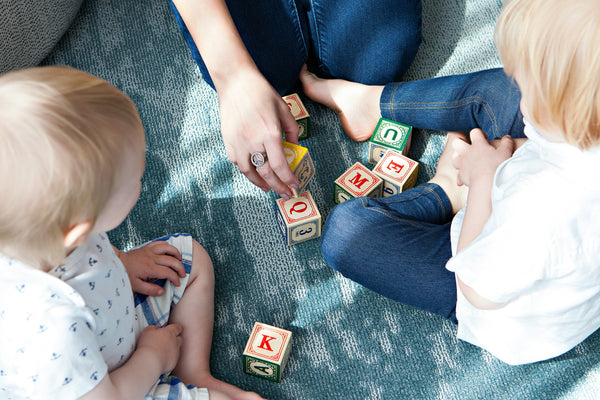Nutrition Tips for Kids with Anal Fissures
share this article
 Watching your little one deal with the pain and discomfort of an anal fissure can be hard, especially when it starts to affect their eating and mood. These small tears in the skin around the anus can cause pain during bowel movements and may even lead to fear of going to the bathroom.
Watching your little one deal with the pain and discomfort of an anal fissure can be hard, especially when it starts to affect their eating and mood. These small tears in the skin around the anus can cause pain during bowel movements and may even lead to fear of going to the bathroom.
Thankfully, nutrition can play a big role in healing fissures and preventing them from coming back.
What Causes Anal Fissures in Kids?
Anal fissures can happen for several reasons, but the most common causes are (1):
-
Constipation and hard poops
-
Diarrhea
-
Inflammatory bowel disease (IBD)
-
Withholding or fear of pooping
-
Low-fiber diets
-
Not drinking enough fluids
Understanding the cause is key because 40% of people who develop an anal fissure have recurring chronic fissures if the root problem isn’t addressed (1).
Top Nutrition Tips for Anal Fissures
The goal is not just to heal the current fissure but also to prevent future ones. That starts with working closely with your kiddo’s pediatrician for medical management while making simple nutrition and lifestyle changes.
1. Increase Fiber Slowly
A high fiber diet is the first step in treating an anal fissure and preventing them from happening again. Fiber helps to soften poops and stimulate the digestive muscles for efficient digestion to prevent constipation.
However, introduce fiber with your little one slowly. Adding too much fiber too quickly can cause gas, bloating, or abdominal pain. Start with one or two servings of fiber-rich foods and gradually increase to serving them at every meal.
Here are some of the top high fiber foods to slowly start to incorporate:
-
Raspberries: 8 grams per cup
-
Black beans: 15 grams per cup (cooked)
-
Lentils: 15 grams per cup (cooked)
-
Chia seeds: 10 grams per 2 tablespoons
-
Green peas: 9 grams per cup (cooked)
-
Artichokes: 7 grams per artichoke
-
Avocado: 10 grams per avocado
-
Pear (with skin): 6 grams per pear
-
Apple (with skin): 4 grams per apple
-
Quinoa: 5 grams per cup (cooked)
-
Oats: 4 grams per cup (cooked)
-
Sweet potato (with skin): 4 grams per potato
-
Almonds: 4 grams per ounce
-
Broccoli: 5 grams per cup (cooked)
-
Brussels sprouts: 6 grams per cup (cooked)
-
Figs (dried): 7 grams per half cup
-
Popcorn (air-popped): 4 grams per 3 cups
-
Pumpkin (canned): 7 grams per cup
-
Whole wheat spaghetti: 6 grams per cup (cooked)
2. Prioritize Fluids
Drinking enough water is a key part in healing and preventing anal fissures. It helps soften poop, reduces the risk of dehydration-related constipation, and supports the smooth movement of fiber through the gut.
Especially while you’re introducing more fiber into your kiddo’s diet, water is essential to keep things moving.
Try these practical tips for getting kids to drink more water:
-
Offer it frequently between meals
-
Introduce a fun character cup or fun colored straw
-
Try fruit infused water for added flavor
-
Serve hydrating fruits like watermelon, strawberries, cantaloupe, and oranges
3. Use Alternative Stool Softeners
If your pediatrician has suggested a stool softener, you can also support your little one naturally with certain foods that help ease constipation. Using these gentle, more natural approaches is a helpful long-term strategy to help prevent future anal fissures.
-
Prunes have insoluble fiber, which adds bulk and helps the gut muscles contract, along with sorbitol, a natural sugar alcohol that pulls water into the colon to soften poop and make it easier to pass.
-
Pears also contain sorbitol and soluble fiber, which work together to soften poop and prevent constipation.
-
Chia seeds are packed with fiber and form a gel-like substance in the gut that helps bulk and soften poop. They also contain prebiotics, which support long-term gut health to help prevent constipation and future anal fissures.
-
Begin Health Growing Up Prebiotics contains Human Milk Oligosaccharide and chicory root fiber, two gentle prebiotics that feed good gut bacteria, support digestion, soften stool, and provide 3 grams of fiber to help your little one meet their daily needs..
4. Focus on Regular Meals and Snacks
Eating on a consistent schedule can help regulate digestion. When meals and snacks happen around the same time each day, the body gets into a rhythm that supports more regular poops. This circadian rhythm helps the digestive system work more smoothly and reduces the chance of withholding.
5. Incorporate Probiotics
Probiotic-rich foods add good bacteria to the gut, which can support digestion and balance the gut microbiome to help prevent future fissures.
Try adding small servings of foods like:
-
Yogurt
-
Kefir
-
Cottage cheese
-
Sauerkraut
-
Kimchi
Your kiddo might have a hard time incorporating probiotic-rich foods because of the tart taste, so start small with serving sizes and pair with foods they already love. Always remember to look for labels that say “live active cultures” or “active strains”.
Summary
Anal fissures are painful and can make bathroom time really stressful for both you and your kid. But with the right nutrition approach, you can help their body heal and reduce the chances of them coming back. Focus on slowly adding fiber, staying well-hydrated, offering natural stool softeners, keeping meal times consistent, and adding probiotics to support a healthy gut.
















